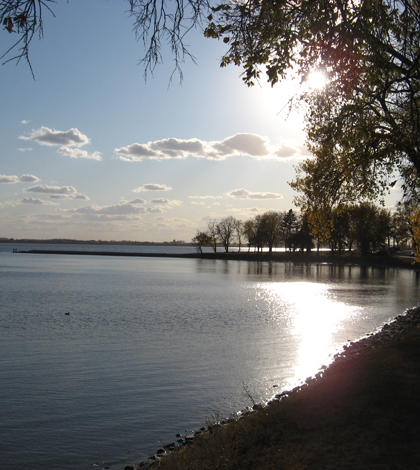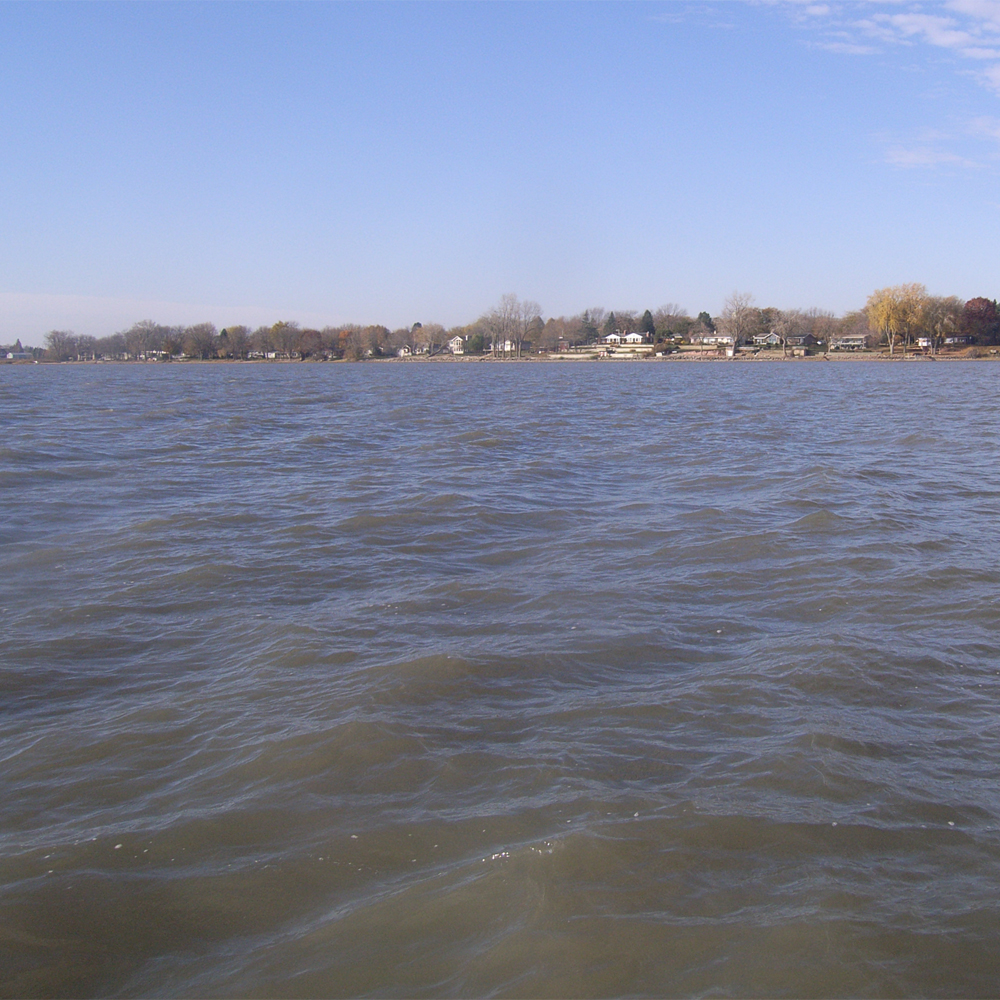Sensors to help sort out Storm Lake’s sediment issues in Iowa

Wind probably isn’t the first thing that people think of when considering causes of poor water quality, but sediment disturbances caused by the combination of shallow waters and high winds are threatening the health of Iowa’s Storm Lake.
Although Storm Lake looks picturesque from a distance, the resuspension of sediment is affecting water clarity and exposing harmful nutrients in the water.
Led by Clayton Williams and John Downing, professors in Iowa State University’s Department of Ecology, Evolution and Organismal Biology, a research team has begun monitoring the lake to determine the causes and potential solutions to the lake’s sediment issues.
In early April, the researchers placed Manta 2 multiprobe sensors on the water’s surface and at the lake’s bottom that will continuously measure the water’s turbidity, temperature, pH, water depth and conductivity.
Researchers will also be using a YSI 6600 sonde to measure a vertical profile of dissolved oxygen, conductivity, pH, depth, temperature and turbidity. In addition to the team’s sensor data, Iowa State University will be monitoring Storm Lake’s algal biomass, total phosphorus, total suspended solids, and total nitrogen conditions in the water column.
The monitoring is being conducted at the same time as the Storm Lake Dredging Program, which is a proactive attempt by the Iowa’s Department of Natural Resources, Lake Preservation Association, Lake Improvement Committee, Buena Vista County and cities of Storm Lake and Lakeside to increase the lake’s depth.
“In Storm Lake, wind is the main driver for the sediment resuspension,” Williams said. “So, they’re dredging to deepen the overall average depth of the lake to limit the bottom that the wind can hit and impact.”
Initial reports from ISU show that the dredging could help reduce resuspended sediment by 25 percent from pre-dredging conditions.
According to Williams, excessive amounts of sediments in Storm Lake could potentially have a dual impact on harming the lake’s wildlife by both blocking crucial light exposure and poisoning the water with nutrient-laden deposits.

High winds stir up suspended sediment in Storm Lake’s shallow waters (Credit: Iowa State University Limnology Lab)
Keeping the amounts of resuspended sediment down is essential for maintaining Storm Lake’s clarity, which is vital for the lake’s ecological balance. Limiting light exposure influences the plants that can grow in the lake, Williams said.
“If they don’t have enough light, there won’t be as many aquatic plants,” he said. “They help stabilize the bottom. They also give a habitat for fish and things fish eat.”
The clarity of the lake matters to the people that live there and use it for recreation.
“There can also be nutrients that are settled out at the bottom, like phosphorus and nitrogen, that can get stirred up into the water column potentially and either get transported out of the lake or cause algal blooms in the lake,” Williams said.
Researchers are also investigating alternative measures that might be performed in conjunction with dredging to help improve the water’s turbidity. One of the suggested ways is to stabilize the area’s shorelines to diminish erosion in the watershed. Stopping such erosion could help curb sediment pollution from outside sources finding its way to Storm Lake.
It is still too early for researchers to draw definitive conclusions from the data they have gathered from Storm Lake. However, their aim is to help provide long-term solutions to the lake’s sediment problem.
“Our goal is to provide the Iowa Department of Natural Resources, as well as the partners of Storm Lake and the city of Storm Lake, with various options for how dredging is influencing sediment resuspension,” Williams said. “So, we’re hoping to be able to link the wind to our in-lake sensors to tell them how the lake responds to wind so they can better manage the lake.”
Iowa State University is planning on monitoring Storm Lake until September of this year before offering its findings.
Top image: Storm Lake (Credit: Denise Krebs, via Flickr)




0 comments